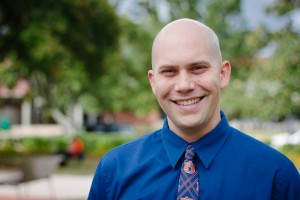 James Radich, assistant professor of chemical engineering, is researching the interfaces between different nanomaterials. Technologies rarely use only one type of material, and understanding the interaction between nanomaterial interface, especially relating to sustainable energy systems, is the core focus of Radich’s research.
James Radich, assistant professor of chemical engineering, is researching the interfaces between different nanomaterials. Technologies rarely use only one type of material, and understanding the interaction between nanomaterial interface, especially relating to sustainable energy systems, is the core focus of Radich’s research.
Semiconductor nanomaterials capture sunlight and can convert it to electricity or chemical fuels. Radich’s lab includes a femtosecond laser spectroscopy system to map the electrons and holes that are created when semiconductors absorb light. Some materials transport electrons effectively, while others are better at transporting holes. Since both types of materials are required for efficient solar cells, studying their interfacial behavior is an important engineering problem relative to commercializing nanomaterial-based solar cells.